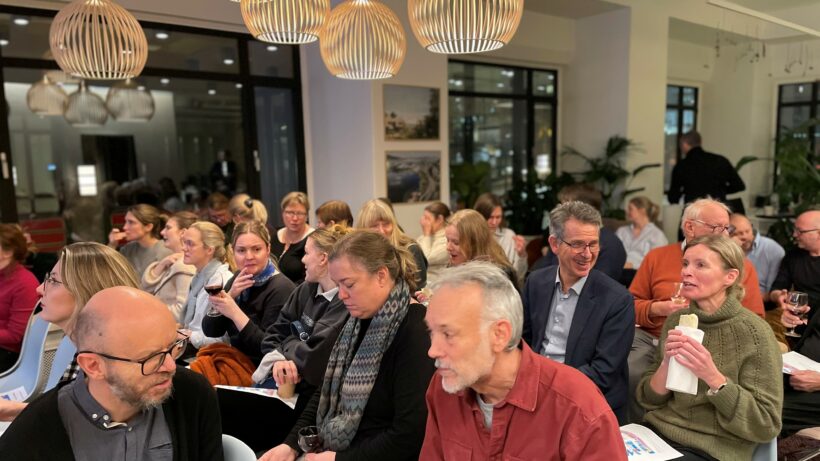Arkitektforum for helsebygg works to spread knowledge among architects in Norway who work on healthcare projects. Over a period of time, the forum has held meetings at architectural practices around the country to discuss various issues. Nearly 60 participants gathered at our office in Oslo and the guests included architects, builders, healthcare professionals and family members.

Children’s perspectives important in designing healthcare environments
In Norway, there is no hospital dedicated to children and young people. This is a topic of debate in the country and the reason why we invited the foundation Arkitektforum for helsebygg to our office in Oslo to discuss children’s hospitals and participatory processes for and with children.
Care planning is a major public investment. By organising meetings such as these, we want to highlight the importance of building with high architectural quality, as it is an investment in both health and the future, but also draw attention to the importance of qualitative work when planning for children. From user participation to finished building.

The meeting included a presentation of the Queen Silvia Children’s Hospital in Gothenburg, which we have designed, and was completed in 2021. The hospital is Sweden’s largest children’s hospital and when it was being designed, we used play and dialogue to capture the children’s perspective and then let their wishes guide the design.
– Queen Silvia’s Children’s Hospital is an excellent example where we have placed great emphasis on involving children and emphasising their commitment and perspective in the planning process. We then took the children’s ideas further in the design process. Against the background of the debate about children’s hospitals in Norway, it feels particularly important to highlight good examples like this, says Gina Bast Mossige.

After the presentations, architect Jens Axelsson, who has worked on the project Children and Adolescent Psychiatry Unit at Södra Älvsborgs Hospital in Borås and on a new children’s hospital in UK, took part in a panel discussion together with Jon Harald Hoff from the Sonja Victoria Stiftelse and Thea Koren from Sykehusbygg. They discussed how children’s hospitals can be planned in Norway and the advantages and disadvantages of hospitals dedicated to children.
In order to create safe healthcare environments for children, it is important to involve children and young people who will be staying in the premises, as well as relatives, in the creative process when planning children's hospitals. In the practical work, this means integrating what the children say into the design and finding solutions for what the children have suggested.
– This can involve everything from adapting the colour scheme to creating rooms that are safe and have a cozy feel rather than a typical healthcare environment, continues Jens Axelsson.
When designing a children’s hospital, it is also important to create spaces for activities such as music and socialising, and not just typical healthcare environments. This is so that the children feel healthy and can live an everyday life. It is important to be able to emphasise what is healthy and have a salutogenic approach. Relatives also play a central role in the planning of children’s hospitals, which need to be designed so that relatives can stay close to the children during the period of care and thus contribute to security.
– Children need a different creative process that takes into account their needs and wishes, as they are more dependent on carers than adult patients. It is therefore important that relatives have a clear place. At Queen Silvia’s Children’s Hospital in Gothenburg, it is possible to stay overnight in the treatment rooms and cook your own food. There is also a sofa that is only for parents, so there is always room for them, says Jens Axelsson.
Contact person
